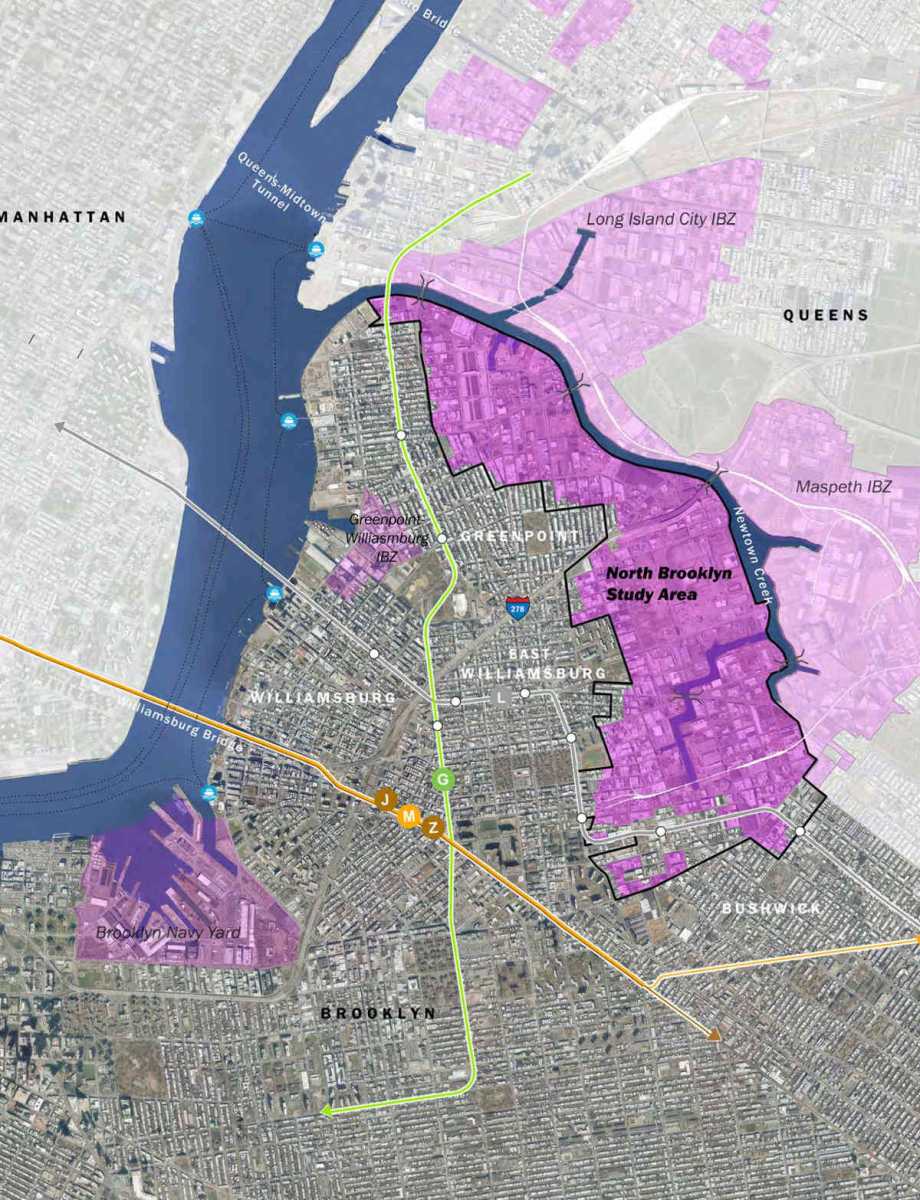The city wants to rezone a chunk of North Brooklyn encompassing parts of Greenpoint, Williamsburg, and Bushwick to bring new commercial activity to the area historically known as a manufacturing hub, according to a study released this month.
The rezoning proposal for the area, which incorporates much of the so-called North Brooklyn Industrial Business Zone, follows Mayor DeBlasio’s multi-million-dollar, 2015 commitment to modernizing such hubs across the city, which also include the Brooklyn Navy Yard and the Brooklyn Army Terminal. It will ensure the area can continue to provide manufacturing jobs, even as development brings new types of businesses and tenants into the neighborhoods, according to a local pol.
“Our manufacturing areas are hubs of economic activity that provide quality jobs and opportunities for local entrepreneurship. However, this report notes industrial businesses are facing increased competition for space from non-industrial uses, such as offices, nightlife, and retail,” said Williamsburg Councilman Antonio Reynoso. “The recommendations outlined in this report to protect core industrial areas in the North Brooklyn Industrial Business Zone will go a long way towards ensuring this area continues to serve as an economic generator for generations to come.”
The area poised for the rezoning includes swathes of Greenpoint, Williamsburg, and Bushwick that border the noxious Newtown Creek and Queens, parts of which in 2006 officials designated as one of 16 industrial-business zones in order to preserve their manufacturing roots.
The study area encompasses three major commercial strips in the neighborhoods, including Greenpoint Avenue, Maspeth Avenue, and Metropolitan Avenue, according to the 168-page document.
In 2016, companies within the area — which is already mostly zoned for industrial use, aside from some low-rise residential buildings, and is home to such businesses as hipster pizza haven Roberta’s, metal factory Sightline Fabricators, and Latin media firm Remezcla — boasted some 19,500 jobs, the third largest amount of the city’s industrial-business zones.
But the study area, which borders fast-growing residential parts of the three neighborhoods it encompasses, is plagued with congestion on its streets, and moratoriums on the size of new structures, which Reynoso’s colleague from Greenpoint said stunt the growth of potential new ventures there.
“Preserving and strengthening our Industrial Business Zones in Brooklyn is crucial to the economic diversity of our city,” said Councilman Stephen Levin (D–Greenpoint). “We welcome the efforts by this administration to apply new and innovative solutions to allow our current industrial businesses to stay in place and for new businesses to have a chance to open and grow.”
In order to jump-start economic development within the area, officials want to set size regulations for retail and restaurant spaces, as well as for new, stand-alone offices. And they want to reduce the allowable floor-area ratio — a zoning measurement abbreviated as “far” that determines how high a structure can be relative to the size of the land it is on — for facilities such as community centers, while increasing the allowable far for industrial and commercial businesses, according to the study.
City planning bigwigs will also look at ways to improve the area’s streets, including bike paths and designated truck routes, and explore whether they can further limit industrial-parking requirements for new buildings in the area.
But the proposal — which the city released on Nov. 19, roughly six months before Brooklyn–Manhattan service on the L train, one of the study area’s main subway lines, stops for 15 months — is just the first step in what will be a lengthy rezoning process, during which the scheme must be green-lit via the city’s Uniform Land Use Review Procedure before new regulations can be implemented.
That process could kick off as soon as the end of next year, according to officials.

























